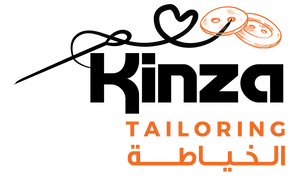What Does a Tailor Do
What Does a Tailor Do? A tailor is a professional who designs, alters, and repairs clothing to fit individuals in the best possible way. Their main responsibility is to make sure that garments are comfortable, well-fitted, and suitable for the purpose they are made for. They work with many types of fabrics and clothing styles, and they use skill and precision to provide services that help people look presentable and confident in their attire.
Introduction to the Role
The work of tailoring is one of the oldest professions in the clothing industry. For centuries, people have depended on skilled workers to prepare outfits that match both cultural traditions and modern fashion. Even today, when ready-made garments are available everywhere, many people turn to professional services for special events, daily wear adjustments, or high-quality custom clothing.
Skills Required in the Profession
This job requires a combination of technical knowledge and creativity. Precision in measuring is the most important skill, because even a small mistake can make clothing uncomfortable. The ability to cut fabric with accuracy and sew neatly is also necessary. Apart from technical abilities, good communication with clients is important, since the worker needs to understand customer needs and expectations clearly. Patience, focus, and dedication are qualities that allow them to deliver professional results.
Tools and Materials Used
In their daily work, these professionals use a variety of tools. Measuring tapes, scissors, sewing machines, needles, and threads are the most basic ones. Advanced tools may include cutting tables, pressing irons, and digital sewing equipment. Fabrics of different textures such as cotton, silk, wool, and synthetic blends are part of their regular material. Each fabric requires special handling techniques to avoid damage and ensure durability.
Types of Services Offered
Their services can be divided into several categories:
-
Alterations – adjusting clothes to fit better, such as shortening sleeves, tightening waistlines, or resizing trousers.
-
Custom clothing – creating garments from scratch according to customer preferences.
-
Repairs – fixing torn seams, replacing zippers, and restoring worn-out areas of clothing.
-
Specialized work – preparing uniforms, wedding dresses, suits, or traditional cultural attire.
Each service demands unique techniques and time, but all focus on improving the look and fit of clothing.
Importance in Everyday Life
Although many people buy ready-made outfits, the profession still plays an important role in society. Well-fitting clothes give confidence in professional meetings, family gatherings, or social events. A person’s appearance can affect the way others perceive them, and tailored garments often create a positive impression. Additionally, by repairing and adjusting clothing, professionals help people save money and extend the life of garments instead of constantly purchasing new ones.
Role in Fashion and Culture
Tailors do more than just repair or adjust. They are also part of the fashion and cultural industry. Designers often depend on them to bring sketches to life, turning an idea on paper into a wearable product. Traditional outfits from different cultures are often prepared by skilled workers who know the techniques passed down through generations. In this way, they not only provide practical services but also help preserve heritage and identity.
The Process of Working
When a client approaches for a service, the first step is consultation. The professional listens to the requirements, takes measurements, and advises on style or fabric choices. After that, they cut the fabric, sew the pieces, and make necessary fittings along the way. Multiple fittings may be required for special garments like suits or dresses. Once the clothing is complete, it is pressed and checked to ensure a perfect finish before delivery.
Training and Education
This career can be learned through formal education or apprenticeships. Some institutions offer courses in fashion design and garment construction. However, many skilled workers learn the craft by practicing under an experienced professional. Continuous practice is essential, because the more experience a person gains, the more accurate and creative their work becomes.
Challenges in the Job
The work is rewarding, but it comes with challenges. Meeting deadlines, especially for wedding seasons or festive times, can be stressful. Fabrics can be expensive, and mistakes during cutting or sewing may cause financial loss. Additionally, every client has different expectations, and satisfying all of them requires skill, patience, and good customer service. Despite these challenges, many professionals find joy in their craft because it allows them to be creative while helping others.
Contribution to Sustainability
Another important aspect of tailoring is its contribution to environmental sustainability. By repairing clothes, resizing old garments, and reusing fabrics, professionals reduce waste. In a world where fast fashion has created large amounts of textile waste, the role of tailoring helps promote responsible use of resources. People who value quality often prefer custom-made clothing that lasts longer, reducing the need for frequent shopping.
The Future of Tailoring
With modern technology, this profession is also evolving. Digital measuring tools, computer-aided design software, and advanced sewing machines are making the work faster and more efficient. Online platforms now connect clients with skilled professionals, including those searching for a ladies tailor in Abu Dhabi, making it easier for people to access their services. However, the personal touch of traditional tailoring—listening, adjusting, and creating clothing that fits the individual perfectly—remains unique and irreplaceable.
Conclusion
The profession of tailoring continues to hold an important place in society. Beyond simply adjusting clothes, these skilled workers combine technical expertise, creativity, and cultural understanding to provide a service that improves both appearance and confidence. Their role supports fashion, preserves traditions, encourages sustainability, and adapts to modern needs. In a world full of changing trends, their work reminds us that quality, fit, and craftsmanship never go out of style.


